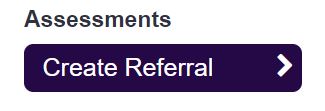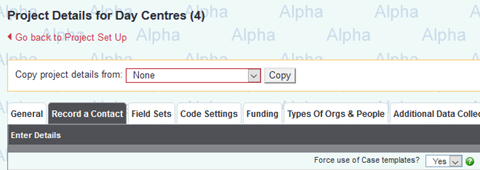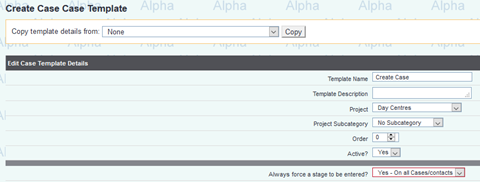Template Release Notes Oct 2020
Contents
[hide]Making templates and stages compulsory
Background
Case templates were introduced many years ago, to speed up repetitive data entry when using Record a Contact (RaC). For instance, if you are frequently logging 60 minutes for a benefits check meeting with a client, and writing “Gave the client a benefits check” in the Details of Contact box in RaC, a template can be created to do this for you.
Because cases typically follow a workflow, for example with an initial contact, assessment, various interventions and closure, template stages are like “templates within a template”, saving typing and clicking at every step.
In addition to the benefits for data entry, template and stages are also useful for reporting. For instance, if you want to know how many cases you’ve closed this month, or how long it’s taken for cases to get from initial contact to assessment, the Progress Interval Report can provide this analysis.
What’s changing in the October 2020 release?
Templates and stages are being made compulsory. This involves 2 changes:
- When you make a new project, a new template will be automatically made called, typically, “Create Case”. This will use your terminology for “group of actions”, so if you call your cases “referrals”, the template will be called “Create Referral”. This template will have one stage called “Case note”. The new template will be empty, so if you use it as-is, it will be essentially the same as creating a case without a template was prior to this update. If you want to use a workflow, you can edit or inactivate the new stage, then add extra stages as required.
- Any existing cases without a template, or actions without a stage, will be assigned to the new “Create Case” template and the “Case note” stage.
Why is this changing?
There are several benefits:
- To speed up the process of setting up a new project, a new template with one stage will be made automatically when the project is created. Similarly, the first stage will automatically be created when a new template for an existing project is created.
- The current options for forcing fields to be entered are limited to “When creating a new case” and “on every action”. By making all actions use a stage, it lays the groundwork for forcing different fields at different stages on a case. For example, you might only want to record classification codes once the enquiry stage has passed, or an Extension Database which you only want to fill in at closure.
- We already have a pilot running of a concept called “Case Status”. This is a broad grouping of stages, which opens up the possibility of a granular list of stages for data entry, linked to a broader list of statuses for reporting. For instance, you could have 3 stages called “Client no longer eligible”, “Required outcomes met” and “Lost contact”, all linked to a status of “Client left the service”.
What will I need to do differently?
There are 4 scenarios identified. These all consider how an individual project runs, rather than your whole organisation, because you may be currently using different scenarios for different projects.
1) Your project has no templates
Visually, there will be almost no change. The current button to make a new case without a template is labelled “Create Case”. This will be replaced with the name of the new template, which is also “Create Case”
On the next page, because there is only one stage, “Case note”, it is hidden and used automatically, so can be ignored.
2) Your project already uses templates and stages, they are compulsory, and always have been
This is because you have used this setting on the project:
...and this setting on the template:
There will be no difference at all – you are already benefiting from always using templates and stages.
3) Your project already uses templates and stages, they are compulsory now, but you originally let your users choose whether or not to use them.
Older actions without a stage will be assigned to a stage called “Case note”, and the case to which the actions belong will be assigned to a template called “Create Case”. The template and stage will be made inactive to prevent their accidental use going forwards.
4) Your project already uses templates and stages, but you let your users choose whether or not to use them.
Actions without a stage will be assigned to a stage called “Case note”, and the case to which the actions belong will be assigned to a template called “Create Case”.
The only difference your users will notice is that they have to use templates and stages. Your users can use the “Case note” stage to log activity that does not fit into your current workflows. You may want to rename the template and/or stage to better fit your organisation’s vernacular.
For more information on how to use templates or stages to capture your workflow, see Referral Templates.


